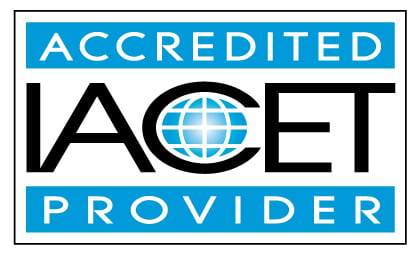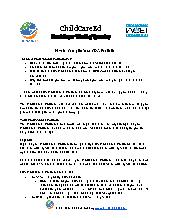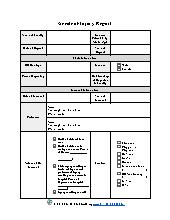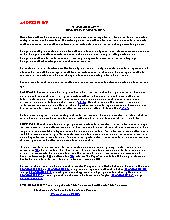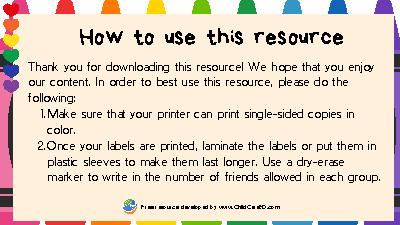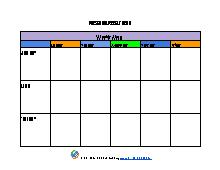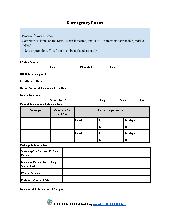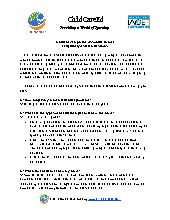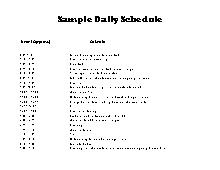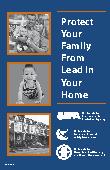CDA Preschool Renewal
Reignite your passion for preschool education with our dynamic CDA Preschool Renewal course, crafted to reaffirm your expertise and dedication to shaping the bright futures of young learners.
After receiving their #CDA credential, child care professionals must complete coursework to renew every three years before their credentials expires. The purpose of renewal is to reaffirm the provider’s knowledge and competence for teaching #preschoolers. This child care course provides all the needed hours in all eight of the CDA's competency standards.
By the end of this training, the learner will be able to:
- Identify the causes and locations of child injuries at childcare settings.
- Identify strategies for effective communication with families.
- Identify factors that may influence learning for a child in the preschool environment.
- Demonstrate understanding of an IEP and removing barriers
- Identify strategies to prevent Adverse Childhood Experiences
- Identify strategies to promote cultural diversity and acceptance in the child care environment.
- List examples ways to incorporate inclusion and equity in the classroom
- Identify different types of play in children ages 2 to 5.
- Demonstrate an understanding of how play promotes development.
- Give examples of strategies to help children resolve conflict amongst themselves.
- Define Adverse Childhood Experiences and identify its effects on child development
- Demonstrate understanding of the harmful effects of excessive sun exposure in infants and young children.
- Describe a classroom management plan that promotes positive reinforcement, clear expectations, and consistent implementation.
- Recognize strategies for effective conferences with families.
- List which professions are mandated reporters.
- List resources and the referral process for preschoolers with a suspected/diagnosed disability.
- List benefits to a multicultural and inclusionary environment.
- Describe the importance of learning centers in the early childhood education environment.
- Describe the primary learning centers and their components.
- Describe the steps teachers should take to identifying challenging behaviors.
- Describe the various ways teachers can address challenging behaviors in the classroom.
- Identify ways to reflect on one's own personal perspectives with courage and/or humility
- Identify ways to interact respectfully and appropriately in a variety of cultural contexts
- Identify ways to examine child behavior to prepare for guidance.
- Identify vehicle safety hazards that pose a major threat to children.
- Identify theorists of guidance and discipline
- Give examples of strategies teachers can use to communicate with parents regarding challenging behaviors.
- Identify Jean Piaget's stages of cognitive development.
- Identify theory and theorist in relation to child development.
- Identify the differences in major theories.
- Demonstrate an understanding of how to keep children safe while in vehicles and school buses.
- Identify resources for referral and specialized services.
- Demonstrate an understanding of potential violations of confidentiality and take steps to reduce the risk of occurrence.
- Demonstrate an understanding of typical and atypical development from age 2 to 5.
- Demonstrate Understanding of Meal Planning for young children.
- Demonstrate an understanding of how to implement an Individual Education Plan.
- Demonstrate how to develop policies and procedures that promote good hygiene
- Identify strategies to make connections and interact substantively with those who are different from oneself
- Demonstrate how theory is reflective in the child care environment.
- Identify strategies to listen while withholding judgement about the new or unfamiliar
- Identify the components of the MY Plate.
- Explain the role of respect in children’s behavior.
- Identify appropriate practices communicable diseases/illnesses and immunizations and their schedules in child care setting
- Define basic skills children should have when they begin kindergarten
- Demonstrate understanding of developing strategies for involving parents in the child care setting.
- Identify the most common sources of stress for young children.
- Identify the signs of child abuse and neglect.
- Identify strategies in promoting sound health and safety principles for in child care.
- Identify strategies for the child care provider that will promote successful child development.
- Identify adaptations to materials and equipment for children with diagnosed special needs or delay
- Demonstrate an understanding of how to be open to new perspectives and diverse others.
- Recognize the importance of collaborating to improve academic performance.
- Identify stages and milestones of development for ages 1 to 5
- Define the term multiculturalism and how it relates to the child's environment.
- Identify strategies for working with children with special needs.
- Identify the nutritional needs of children aged four and above.
- Distinguish appropriate indoor safety concerns
- Distinguish appropriate outdoor safety concerns
- Demonstrate an understanding of diverse perspectives, and navigate the ambiguity and complexity that comes with that.
- Demonstrate communication skills that enable intercultural communication, including effective listening skills
- Identify best practices in room arrangement for the preschool setting.
- Identify the importance of professional development for child care professionals and strategies to make meaningful choices.
- Describe the meaning of positive discipline in the classroom.
- Identify strategies to facilitate learning in the early childhood classroom using various methods.
- Identify causes of obesity in children.
- Demonstrate an understanding of proper food storage and preparation.
- Identify strategies to assist children with food allergies/feeding concerns.
- Recognize the importance of problem solving and conflict resolution strategies with community members and families
- Define active play in the early childhood classroom and describe its benefits for young children.
- Identify communication issues that are common in the early care and education environment
- Describe the various forms of bullying
- Demonstrate appropriate/effective responses as they relate to a variety of typical child care scenarios.
- Criteria to earn CEUs:
- Certificates are awarded when the following criteria have been met by the learner:
- Class has been paid in full
- All material has been reviewed
- All review questions and final test have been completed with a passing score of 80% or higher.
- Learning Assessment Method:
- Learners will be assessed through questions after every section is completed. Learners will not be
allowed to proceed to the next section of the training until all questions have been answered correctly.
Learners will be presented with a final test composed of true/false and multiple choice questions.
Upon successful completion of the training, learners will receive their certificate by email.
- Learning Methodology:
- Online material will be presented in the form of slides,
accompanied with speech. Videos will be used to demonstrate ideas and concepts. Charts and tables
will be used for illustration.
- Logistics/Required Technology:
- A stable internet connection is required for the completion of this course. Users are highly encouraged to take their online course on Google Chrome on either a laptop or desktop computer. Speakers and/or headphones are also required to hear speech.
- Payment Policy:
- Payments need to be made in full. No refunds will be issued after starting the class.
- Proprietary or conflict of interest disclosure:
- Unless otherwise stated in the course description none of H & H subject matter experts and editor has any conflict or proprietary interests related to the material they prepared in this course.
- Support Services:
- Please visit our contact us page
You are purchasing a session of an online training that includes online assessments. Your certificate will be emailed to you once you pass the final exam with a passing grade of 80%.
Your certificate will bear the name you provided to us when you signed up. For support and questions regarding the material presented in this class please contact us at info@childcareed.com. Please consult our frequently asked questions page for other questions or feel free to contact us.
No prerequisites are required for the completion of this course.
Hours breakdown
7 CD/8 CUR/8 HSN/7 SN/8 PRO/7 COMTopics / Categories
Health, safety and nutritionCurriculum
Professionalism
Special needs
Child development
Community
Group Admin
Preschool Educators
Not Applicable
Basic
Latest Jobs
- UNITED STATES OF AMERICA - Maryland
- UNITED STATES OF AMERICA - Arizona
- UNITED STATES OF AMERICA - California
- UNITED STATES OF AMERICA - Connecticut
- UNITED STATES OF AMERICA - Delaware
- UNITED STATES OF AMERICA - District of Columbia
- UNITED STATES OF AMERICA - Georgia
- UNITED STATES OF AMERICA - Michigan
- UNITED STATES OF AMERICA - Oklahoma
- How to Get Your Preschool Teacher Certification: Steps, Tips, and Benefit
- Keeping Your Florida CDA Current: A Guide to Renewal

